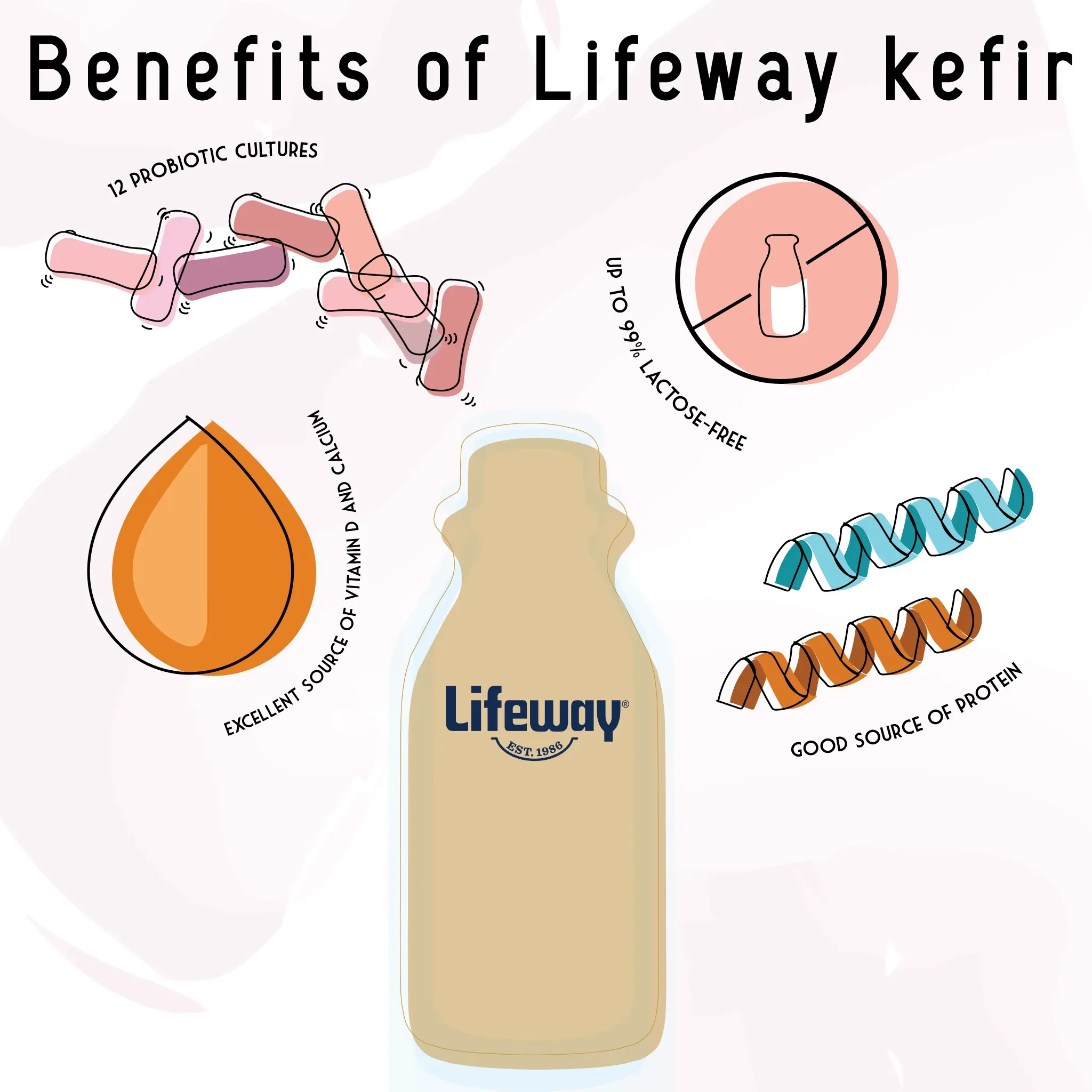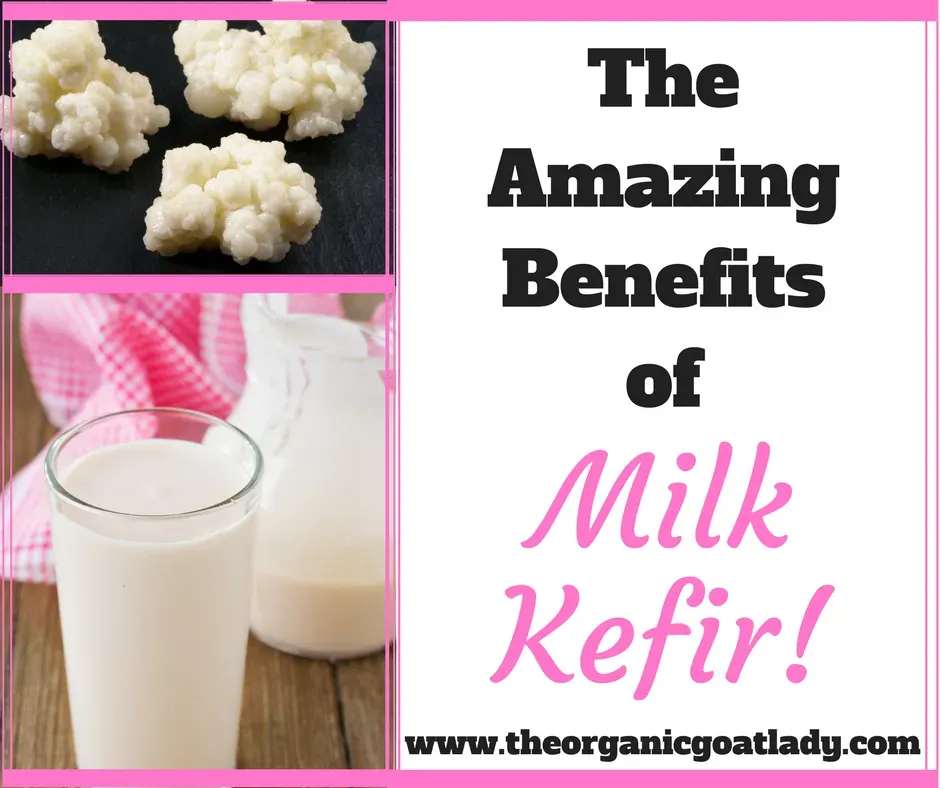Table of Contents
Scrolling through social media or chatting with friends, you've likely heard the buzz around kefir. It's popped up everywhere from health food stores to the dairy aisle of your local supermarket. But maybe you're watching your fat intake, and the idea of a creamy, fermented drink gives you pause. You might wonder, can you get the good stuff without the extra fat? Specifically, what are the realkefir low fat milk benefits? Are they just marketing hype, or is there solid ground to stand on?
What's the Deal with Kefir Low Fat Milk?

What's the Deal with Kefir Low Fat Milk?
More Than Just Sour Milk
Alright, so you're wondering about this kefir stuff, especially the low-fat version. Think of it like yogurt's slightly wilder, fizzier cousin. At its core, kefir is a fermented milk drink, but instead of just a couple of bacterial strains like most yogurts, it uses a complex community of bacteria and yeasts living together in what are called "kefir grains." These aren't actual grains like wheat or rice; they're little cauliflower-like clumps where the magic happens. When these grains hang out in milk, they ferment the lactose (the sugar in milk), creating that tangy taste and unique texture. Now, when we talk aboutkefir low fat milk benefits, we're specifically looking at what happens when you use milk with less fat content during this process.
The Low-Fat Angle
Using low-fat milk means you're starting with milk that has had most of the milk fat removed. The fermentation process with the kefir grains still happens pretty much the same way. The bacteria and yeasts munch on the lactose, producing lactic acid, carbon dioxide (hence the fizz), and other beneficial compounds. The main difference you'll notice right away is the texture and calorie count. Low-fat kefir tends to be thinner than whole-milk kefir. Some people prefer this lighter feel, especially if they're adding it to smoothies or cereals. Others miss the creamy richness. From a nutritional standpoint, the key distinction is, well, the fat and the calories that come with it. But does reducing the fat change the other good stuff, like the probiotics?
So, what exactly are these "kefir grains" made of?
- Bacteria (a wide variety, including Lactobacillus, Lactococcus, Streptococcus, and Bifidobacterium species)
- Yeasts (both lactose-fermenting and non-lactose-fermenting types)
- Casein (milk protein)
- Complex polysaccharides (like kefiran, produced by the bacteria)
Unpacking the Real Kefir Low Fat Milk Benefits

Unpacking the Real Kefir Low Fat Milk Benefits
Gut Feeling: Probiotics Punching Above Their Weight?
let's get down to brass tacks on thosekefir low fat milk benefits. The biggest claim you hear is about gut health, and that circles back to the probiotics. Unlike some yogurts that list maybe two or three strains, kefir, thanks to those grains, often boasts a much wider variety of beneficial bacteria and yeasts. When you drink it, these tiny microbes are supposed to make a pit stop in your digestive tract. The idea is they help balance the gut microbiome, potentially crowding out some of the less-friendly bacteria and generally making things run smoother. Think of them as tiny peacekeepers throwing a party in your intestines. While research is still digging into the specifics, a balanced gut microbiome is linked to all sorts of things, from digestion to immune function.
Nutrient Delivery and Lactose Lowdown
Beyond the probiotics, low-fat milk kefir still brings some nutritional value to the table. You're getting protein, calcium, and often vitamins like D and B12, depending on fortification. The fermentation process can also break down lactose. This is a big deal for folks who get gurgly or uncomfortable after drinking regular milk. The bacteria in the kefir grains eat a good chunk of that lactose, making the final product much lower in the sugar that causes trouble for lactose-intolerant individuals. So, you might get the calcium and protein from milk without the usual digestive drama. It's not zero lactose, mind you, but often significantly reduced.
So, what are some potential benefits people talk about?
- Improved digestion and gut regularity
- Support for a balanced gut microbiome
- Potential immune system support (linked to gut health)
- Better tolerance for lactose compared to regular milk
- Source of protein, calcium, and vitamins (like B12 and K2, depending on the milk source and fermentation)
Kefir Low Fat Milk Benefits Compared to Other Options

Kefir Low Fat Milk Benefits Compared to Other Options
Low-Fat Kefir vs. Full-Fat Kefir: The Fat Question
so you've got regular kefir made with whole milk, and then you've got the low-fat version. The most obvious difference, as the name suggests, is the fat content. Full-fat kefir is creamier, richer, and naturally has more calories because fat is calorie-dense. Low-fat kefir is lighter on the palate and the waistline, if you're counting calories. Does this difference in fat affect the corekefir low fat milk benefits, particularly the probiotics? Not really, at least not directly. The fermentation process and the resulting probiotic load are primarily dependent on the kefir grains and the lactose available, not the fat. However, the fat content can influence how your body absorbs certain fat-soluble vitamins (like A, D, E, K) that might be present in the milk or added during fortification. So, while the probiotic punch might be similar, the overall nutritional profile shifts slightly when you cut the fat.
Kefir vs. Yogurt: More Bugs for Your Buck?
Many people lump kefir and yogurt together, and sure, they're both fermented dairy, but they're not identical twins. Yogurt typically uses a few specific bacterial cultures to ferment milk, resulting in that familiar thick texture. Kefir, made with grains, involves a much wider range of bacteria and also yeasts. This means kefir generally contains more diverse types of probiotics, and often a higher total number of them, than most yogurts. For those chasing maximum microbial diversity, kefir might seem like the better play. Another key difference is the lactose content. While some yogurts are decent for lactose intolerance, kefir's more extensive fermentation often breaks down even more lactose, potentially making it even easier on sensitive stomachs. Plus, kefir is a drink, while yogurt is usually eaten with a spoon – a small point, but it changes how you might use it.
Feature | Low-Fat Kefir | Regular Yogurt | Regular Milk |
|---|---|---|---|
Probiotic Diversity | High (Bacteria & Yeasts) | Moderate (Bacteria) | None (unless added) |
Lactose Content | Low (due to fermentation) | Moderate (varies) | High |
Texture | Drinkable, thinner | Thick, spoonable | Liquid |
Fat Content | Low | Varies (low-fat to full-fat) | Varies (skim to whole) |
Beyond Dairy: Kefir vs. Plant-Based Options
The dairy aisle isn't the only place to find fermented drinks these days. Kombucha, water kefir, and fermented plant-based milks (like soy or almond kefir) are also popular. How do thekefir low fat milk benefitsstack up against these? Plant-based kefirs offer an alternative for those avoiding dairy altogether, whether due to allergy, intolerance, or dietary choice. They can still contain probiotics, but the specific strains and nutritional content (protein, calcium) will differ significantly based on the base ingredient (soy, almond, oat, etc.) and the cultures used. Water kefir and kombucha are often lower in calories and fat than milk kefir but typically lack the protein and calcium found in dairy. The choice really comes down to your dietary needs, preferences, and what specific benefits you're prioritizing – gut health from probiotics, calcium, protein, or avoiding dairy.
How to Actually Use Kefir Low Fat Milk

How to Actually Use Kefir Low Fat Milk
Straight Up or Smooth Operator
Alright, so you've got this bottle of low-fat milk kefir. Now what? The simplest way, of course, is just to drink it. Pour it into a glass and knock it back. It's tart, maybe a little fizzy, and definitely an acquired taste for some. Think tangy milk with a kick. If that's a bit too intense, it's a fantastic base for smoothies. Blend it with fruit (berries are great), a handful of spinach (you won't taste it, promise), maybe some seeds or a spoonful of nut butter. This mellows out the tang significantly and makes it an easy way to get those potentialkefir low fat milk benefitswithout feeling like you're doing a health penance.
Beyond the Glass: Cooking and Baking
Don't just relegate your low-fat kefir to breakfast drinks. It can pull its weight in the kitchen too. Use it anywhere you might use buttermilk or yogurt. Thinking of making pancakes or waffles? Swap the milk or buttermilk for kefir. The acidity reacts with baking soda to give you a lighter, fluffier result. It works in muffins, quick breads, or even biscuits. Just remember it's thinner than some yogurts, so adjust liquids slightly if needed. You can also use it in marinades for chicken or pork; the acidity helps tenderize the meat, and the probiotics (while likely diminished by heat) don't hurt.
Use Case | Benefit | Consideration |
|---|---|---|
Drinking Plain | Quick, pure form | Taste can be intense |
Smoothies | Easy way to mask taste, adds nutrients | Can dilute flavor of other ingredients |
Baking (Pancakes, Muffins) | Adds tenderness, reacts with leaveners | Acidity level matters, adjust liquids |
Marinades | Tenderizes meat | Heat may reduce live probiotics |
Dressings, Dips, and Savory Swaps
Low-fat kefir's tang makes it a natural fit for savory applications. Whisk it into salad dressings for a creamy, probiotic-rich base instead of sour cream or mayo. Add herbs, garlic, lemon juice, salt, and pepper for a quick ranch-style dressing. It can also lighten up dips – mix it with mashed avocado for a tangier guacamole or blend it with cucumber and dill for a quick tzatziki-like sauce. I've even seen people use it as a base for a cold soup like gazpacho for an extra layer of complexity. It's a simple swap that boosts the nutritional profile and adds a pleasant acidity.
The Final Sip on Kefir Low Fat Milk Benefits
So, there you have it. Low-fat kefir, made from milk, isn't just another fleeting health trend. It offers a legitimate source of probiotics, potentially supporting digestive health and contributing valuable nutrients like calcium and protein without the higher fat content of its full-fat counterparts. While it's not a miracle cure for anything, and individual mileage will absolutely vary, incorporating it could be a straightforward way to add some beneficial bacteria and nutritional density to your diet. It's a simple fermented drink, not a life-altering elixir, but sometimes, the simple things actually work.
